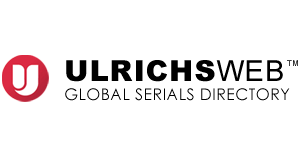Журнал включен в российские и международные библиотечные и реферативные базы данных
|
РИНЦ (Россия)
RINZ (RUSSIA)
|
Регистрационное агентство DOI (США)
DOI Registration Agency (USA)
|
Эко-Вектор (Россия)
Eco-Vector (Russia)
|
Ulrichsweb (Ulrich’s Periodicals Director
|
Drug-induced liver lesions: collisions of the «medicine-liver» tandem in pediatric practice
DOI: https://doi.org/10.29296/25879979-2022-05-09
Issue:
5
Year:
2022
Peptic ulcer is a chronic relapsing disease characterized by the formation of a defect in the wall of the stomach and / or duodenum. The incidence of upper gastrointestinal bleeding is 30–150 per 100,000 adults per year, and in most cases they result in hospitalization. In 68% of cases, people are over 60 years old, and 27% are over the age of 80 years. Mortality from PU continues to be high (5-10%, up to 15%). The cause of occurrence is a combination of predisposing internal (genetic markers, microflora) and external factors. A significant contribution to the development of peptic ulcer is prescribed by the bacteria Helicobacter pylori. At the moment, as a conservative treatment, it is recommended to focus on antibiotic therapy in order to eliminate the pathogen and reduce its pathological effect on the wall of the affected organ. Of the available spectrum of antibiotics, metronidazole is considered the most suitable, since it has high activity against Helicobacter pylori when administered orally, efficiency in short courses of treatment, high bioavailability, good penetration into organs and tissues.
Keywords:
drug-induced liver injury
children
drug-induced cholestasis
monitoring of liver functions
nurse
References:
- Postnikov S.S., Gratsianskaya A.N., Kostyleva M.N. Drug-induced diseases of the liver in children. Praktika pediatra. 2013; No. 12 (December): 9 –15
- Borzakova S.N., Reyzis A.R. Principles of diagnosis and therapy of drug-induced liver injury in children with tuberculosis. Ros Vestn Perinatol i Pediatr 2018; 63:(3): 91–97. DOI: 10.21508/1027–4065–2018–63–3–91–97
- Larionova V.B., Snegovoy A.V. Possibilities of correcting drug liver toxicity in the treatment of patients with tumors of the blood system. Onkogematologiya. 2020;15(4):65–81
- Ostroumova OD, Shikh EV, Shikh NV, et al. Drug-induced liver injury with cholestasis in the neurologist and psychiatric practice. Nevrologiya, neiropsikhiatriya, psikhosomatika /Neurology, Neuropsychiatry, Psychosomatics. 2022;14(1):14–21. DOI: 10.14412/2074-2711-2022-1-14-21 (In Russ.).
- Ivashkin VT, Baranovsky AYu, Raikhelson KL, et al. Drug-Induced Liver Injuries (Clinical Guidelines for Physicians). Rossiyskiy zhurnal gastroenterologii, gepatologii, koloproktologii. 2019;29(1):85-115. doi: 10.22416/1382-4376-2019-29-1-101-131.
- Tisdale J.E., Miller D.A., eds. Drug-induced diseases: prevention, detection, and management. 3rd ed. Bethesda, Md: American Society of Health-System Pharmacists; 2018: 1400 р.
- Korenskaya E.G., Paramonova O.V. Drug-induced liver injury is one of the important problems in the comorbid patient. Consilium Medicum. 2019; 21 (8): 78–83. DOI: 10.26442/20751753.2019.8.190355
- Björnsson ES. Risk of drug-induced liver injury from tumor necrosis factor antagonists. Clin Gastroenterol Hepatol 2015; 13 (3): 602–8. doi: 10.1016/j.cgh.2014.07.062.
- Fisher K, Vuppalanchi R, Saxena R. Drug-induced liver injury. Arch Pathol Lab Med 2015; 139 (7):876–87.
- Pimanov S.I., Makarenko E.V. Idiosinkrazicheskie lekarstvennye porazheniia pecheni: diagnostika i lechenie. Med. sovet. 2017; 5: 100–7
- Reporting adverse drug reactions definitions of terms and criteria for their use. Geneva: CIOMS. 1999. 146 p.
- Burt A.D., Portmann B.C., Ferrell L.D. MacSween’s Pathology of the Liver, 6-th Edition, 2012: 645–760.
- Ortega-Alonso A., Stephens C., Lucena M.I., Andrade R.J. Case character-ization, clinical features and risk factors in drug-induced liver injury. Int Mol Sci. 2016; 17(5):714. doi: 10.3390/ijms17050714
- Chitturi S., Farrell G.C. Drug-induced cholestasis. Semin Gastrointest Dis. 2001; Vol. 122: 113–24.
- Eremina E.Yu. Drug-induced liver injury. Prakticheskaya meditsina. 2014; 77 (№1, March): 20
- Lupash N.G., Shakaryan K.A., Matalayeva S.Yu., Kharitonova L.A. Cholelithiasis in infants – conservative or surgical treatment? Ros Vestn Perinatol i Pediatr. 2018;63(4):63–68. https://doi.org/10.21508/1027-4065-2018-63-4-63-68
- Zaprudnov A.M. Reye’s syndrome in childhood. Paracetamol in pediatric practice. Moscow: Sterling health, 1995: 59 p.
- Zaprudnov A.M., Grigoriev K.I., Kharitonova L.A., et al. Problems and prospects of modern pediatric gastroenterology. Pediatriya. 2016; 95 (6): 10–18
- Zimmerman HJ. Hepatotoxicity: The adverse effects of drugs and other chemicals on the liver. 2nd edition. Philadelphia, PA: Lippincott Williams & Wilkins; 1999. 789 p.
- Baranovsky A.Yu., Kondrashina E.A., Marchenko N.V., et al. Drug-induced liver injury. Clinical recommendations for doctors St. Petersburg: 2017: 116 p.
- Kazyulin A.N., Velshner L.Z., Byakhov M.Yu., et al. Efficiency of accompanying therapy with ademetionine (Heptral) during antitumor drug therapy in patients with oncological diseases of various localization. Zlokachestvennyye opukholi/Malignant tumors. 2013; 3: 16–34
- Sandler YU.G., Vinnitskaya E.V., Saliev K.G., et al. et al. Drug-induced liver injury induced by non-steroidal anti-inflammatory drugs: lecture and clinical observation. Al’manakh klinicheskoy meditsiny. 2019; 47(6):579–91. doi: 10.18786/2072-0505-2019-47-060 (In Russ.)
- Padda M.S., Sanchez M., Akhtar A.J., et al. Drug induced cholestasis. Hepatology. 2011; 53(4): 1377–1387. doi: 10.1002/hep.24229




